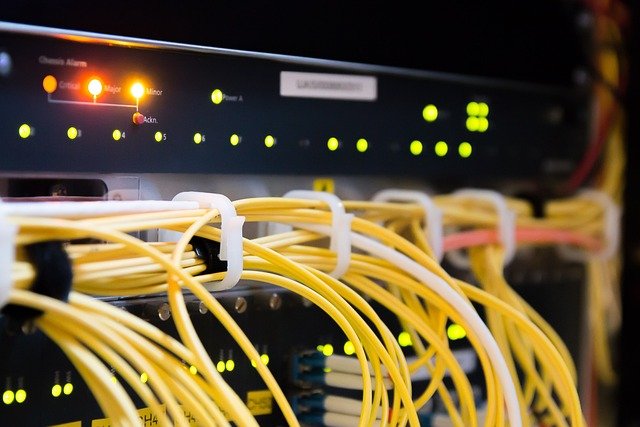Enhancing onboard connectivity and passenger information systems
Reliable onboard connectivity and clear passenger information systems are central to modern mobility. They support real-time route updates, ticketing and bookings, fleet management, and passenger comfort while enabling data-driven analytics and forecasting. Operators can balance scheduling, pricing, and sustainability goals through integrated digital solutions that improve operational efficiency and passenger experience.

How does mobility and transit benefit from onboard connectivity?
Onboard connectivity transforms mobility by linking vehicles, control centers, and passengers. For transit operators, continuous connectivity enables live monitoring of fleet health, automatic updates to schedules, and timely passenger alerts. Connectivity also supports mobile ticketing and contactless payments, reducing dwell times at stops and improving boarding flows. When integrated with analytics, connectivity helps forecast demand and adjust service frequency to match passenger patterns while promoting efficient resource use.
How do bookings and ticketing integrate with passenger information?
Modern bookings and ticketing systems connect directly with passenger information displays and mobile apps, providing synchronized updates on delays, transfers, and fare rules. Integration reduces confusion and supports dynamic pricing models tied to scheduling and demand. By using real-time feeds, operators can push targeted messages about alternative routes or service changes, improving passenger satisfaction and lowering the operational friction associated with manual interventions.
How can logistics and fleet systems improve with real-time data?
Real-time feeds from vehicles give logistics and fleet managers visibility into location, performance, and utilization. This data drives route adjustments, predictive maintenance schedules, and optimized asset allocation across depots. When logistics platforms ingest telemetry from vehicles, they can better predict arrival times and reduce empty runs. The combined effect is improved punctuality, reduced fuel consumption, and clearer passenger messaging based on accurate ETA information.
How do routes and scheduling leverage analytics and forecasting?
Analytics and forecasting translate historical ridership, events, and sensor data into actionable scheduling decisions. Forecasting models help operators reconfigure routes during peak hours, special events, or service disruptions. When predictive analytics are paired with passenger information systems, updates reach travelers in advance, allowing them to choose alternative routes or stagger trips. This coordination supports smarter use of fleet resources and enhances on-time performance metrics.
How does pricing and sustainability relate to passenger experience?
Pricing strategies can be adjusted dynamically through connected systems to manage demand, incentivize off-peak travel, or support fare equity programs. Connectivity enables transparent fare displays and real-time updates about discounts or integrated multimodal tickets. Sustainability goals benefit from optimized routing and reduced idle times; data-driven scheduling lowers emissions per passenger and supports reporting on environmental impact, aligning pricing and operations with broader sustainability objectives.
| Product/Service | Provider | Cost Estimation |
|---|---|---|
| Onboard Wi‑Fi hardware and installation | Cisco Meraki / CommScope (Ruckus) | Hardware: $1,000–$6,000 per vehicle; Data/subscription: $50–$300 per vehicle/month |
| Passenger Wi‑Fi and PIS platforms | Icomera / Nomad Digital | Deployment: $2,000–$8,000 per vehicle; Connectivity subscription: $100–$500 per vehicle/month |
| Mobile ticketing and fare platforms | Masabi / Cubic | Licensing/transaction: $1,000–$10,000 per month (scale dependent); integration fees vary |
| Fleet telematics and analytics | Verizon Connect / Samsara | Device & install: $200–$1,000 per vehicle; Service: $10–$50 per vehicle/month |
| Passenger information display systems (PIS) | Siemens Mobility / Thales | Project-based costs: typically $10,000+ per vehicle or stop for full PIS rollout (varies widely) |
Prices, rates, or cost estimates mentioned in this article are based on the latest available information but may change over time. Independent research is advised before making financial decisions.
What compliance and connectivity measures support passenger services?
Compliance covers data protection, accessibility, and local regulatory requirements for communications and ticketing. Ensuring secure connectivity involves encrypted communications, stringent access controls, and privacy-aware handling of passenger data. Accessibility features—such as multilingual announcements, visual displays, and accessible booking flows—must be built into passenger information systems to meet compliance and service expectations. A robust connectivity backbone and governance policies enable reliable, lawful delivery of services to all passengers.
Conclusion Enhancing onboard connectivity and passenger information systems requires coordinated investment in hardware, software, and governance. When mobility, bookings, ticketing, logistics, fleet, routes, scheduling, pricing, sustainability, analytics, and forecasting are connected, operators gain visibility and resilience. Practical deployments pair clear passenger messaging with measurable operational improvements, helping transit systems meet evolving expectations while maintaining compliance and cost awareness.





